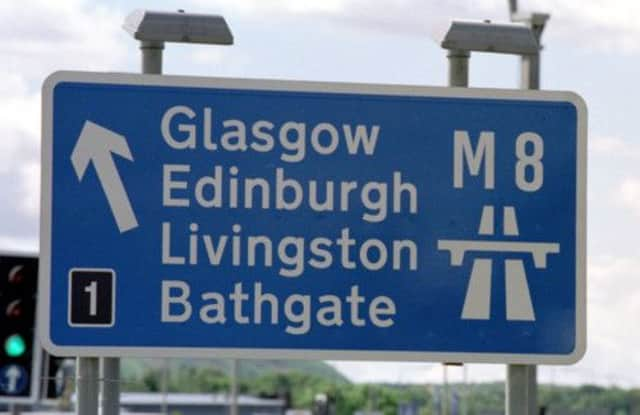Controversy over bridge which spans M8 in Glasgow


The redundant crossing, which has spanned the M8 in Glasgow for 50 years, is due to be completed in July as part of a £3 million walking and cycling route between the west end and the city centre.
However, concerns have been raised about the viability as a crossing for the elderly and disabled because of the steepness of the spiral access ramp which is planned for the unfinished side.
Advertisement
Hide AdAdvertisement
Hide AdThe bridge’s developers admit that the ramp at the west end of the crossing would not meet current building standards – it has a gradient of up to 1 in 15, more than design guidance for new ramps of 1:20.
The ramp also does not have flat sections, or “landings”, for rest stops, as would be required on new bridges.
A section of the eastern side of the bridge which connects it to Waterloo Street is even steeper, at 1:12.
The Scottish Accessible Transport Alliance (SATA), which campaigns for disabled people, said it was worried about the bridge’s design.
Secretary Mike Harrison said the project website stated: “The bridge section of the route will be designated a shared surface providing a useful link for cyclists, wheelchair users, and pedestrians.”
But he added: “This would suggest the gradient will be at 1:20, but looking at the illustration, this is hard to believe. There are no landings shown either – which are required for every 0.5m (1.6ft) rise.”
Age Scotland, which describes itself as the leading national authority on older people, welcomed the project in encouraging walking and cycling through Glasgow city centre, but feared the bridge could be an obstacle rather than a gateway.
Spokesman Doug Anthoney said: “It would be disappointing should access on some sections of the route prove inadequate for all members of the community. We would expect project managers to accommodate the needs of disabled, or less physically able, older people in the design.”
Advertisement
Hide AdAdvertisement
Hide AdThe project, largely paid for by the Big Lottery Fund, Scottish Government and Strathclyde Partnership for Transport, is part of cycle path developers Sustrans’s UK-wide Connect2 scheme for new bridges across busy roads, rivers and railways.
Glasgow City Council, which designed the project, said rebuilding the steepest sections of the bridge had been ruled out as too expensive and impractical.
A spokesman said: “In 2007, a wide-ranging consultation was carried out, including with representatives of mobility-impaired and other disabled groups, with a view to seeking grant funding. This included a site visit, during which representatives used the existing structure. Response was very positive and supportive of the proposals. All aspects of the newly- constructed elements are within the current guidelines regarding gradients.
“However, the pre-existing helical ramp at the west end of the bridge has a gradient of between 5 per cent and 6.5 per cent [1:20 to 1:15], which is slightly above current guidelines but considered acceptable for an existing structure.
“A short deck section, around 15m (50ft) in length, towards the east end of the existing bridge has a gradient of up to 8 per cent [1:12].
“Again, this is above current guidelines but judged to be acceptable in the local circumstances – particularly given the positive response to the consultation.”